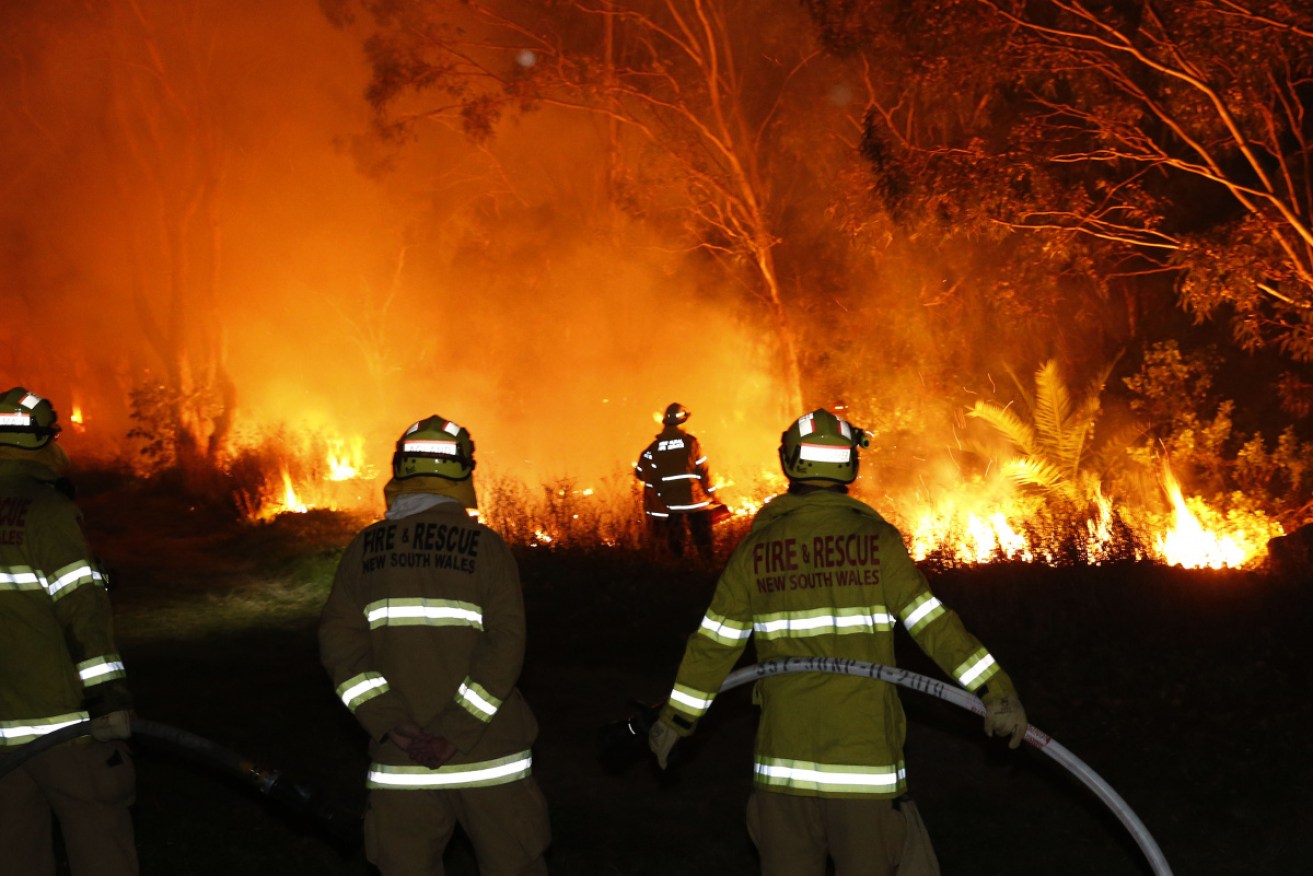‘A patchwork of risk’: Queensland bushfires just a taste of things to come


The Prime Minister has argued Australia's share of global warming is so small that nothing he did would make a difference. Photo: AAP
Queensland is in the midst of what is thought to be its worst-ever bushfire season, and it’s just a taste of what is coming for the rest of Australia.
That is the message from bushfire authorities across the nation who are watching the blazes raging across the northern state with trepidation.
Dale Dominey-Howes, Professor of Hazards and Disaster Risk Sciences at the University of Sydney, said Australians needed to brace themselves for an extreme fire season.
“The risk of intense bushfire is very high,” Professor Dominey-Howes said.
“Much higher than usual because we’ve had a drought across much of the country. That long-range weather forecast shows below-average rain and above-average temperatures,” he added.
The extreme weather, coupled with the fact more Australians are living in bushland where fires naturally start, and the changing climate will mean this fire season is more severe, Professor Dominey-Howes said.

Vast areas of Australia have an above-normal fire potential this season. Image: CRC
“If we make droughts more common and longer lasting, again all those things don’t help when natural bushfires occur,” he said.
“We have known the climate is changing because of human-induced reasons and we’re rolling the dice towards warmer, dryer conditions.”
The fear is the resulting blazes could be catastrophic, on the scale of the 2009 Black Saturday bushfires, which killed 173 people across Victoria.
“All of that tips the scale to a bushfire season that is worse than we’ve seen for a number of years, since 2009,” he said.
Southern states warning
“Across that large landscape between Queensland and Victoria, in some cases, the situation is worse because weather and climate might be worse.
“Other places might be a bit wetter, but it might be that houses have been pushed into at-risk bushfire areas. So it’s a patchwork of risk.”

Marysville after the smoke haze cleared in 2009. Photo: AAP
The latest Australian Seasonal Bushfire Outlook backs up the dire prediction.
The east coast of Australia – New South Wales, Victoria and Tasmania as well as parts of southern Western Australia and South Australia – are all facing a severe season, with “above average’ fire danger recorded.
“The dry landscape means that any warm and windy conditions are likely to see elevated fire risk. Countering the climate signal, poor growth of grass and annual plants means that vegetation loads are reduced in drought-affected areas,” the outlook stated.
Currently, Queensland and NSW remain in the grips of the worst start to the bushfire season in living memory and evacuation warnings for areas across the states still ringing out.
One volunteer firefighter from Queensland, who asked to remain anonymous, said the fires were “something else”.
“It’s been far harder than we anticipated,” he said.
“Fire dangers as high as they have been in the first two weeks of September has never been seen before.

A bushfire threatens suburban homes in Peregian Beach. Photo: AAP
“We knew it was going to be a tough season. But none of us expected to see upwards of 50-plus fires and 20-plus properties lost in September.
“This will only get worse. No rain for the next few months, we’re approaching hotter weather, which means conditions will worsen.”
Bushfire deaths
Dr Paul Read, co-director of the National Centre for Research in Bushfire and Arson, said Australia’s eastern seaboard would likely have increasingly worse fire seasons up until 2020.
With that, will come more deaths, he said.
“Unfortunately we’ll see higher mortality rates,” Dr Read warned.
“You need three conditions for a bad season – dryness, fuel and ignition. The arsonist provides the ignition, climate change provides the dryness, and everything else is the fuel.
Tweet from @zalisteggall
“We’ve got crops falling, properties being destroyed, people’s lives being threatened.”
He pointed to Victoria’s Gippsland region and WA as good examples of where emergency services worked with communities and governments to roll out best bushfire practice.
“It’s only a matter of time before we have 2009 again. And I expect it’ll happen before 2022,” he said.
“That’s not long. I think we need to lift our game nationally. And make use of all the excellent work that’s already there. Often done by people who are volunteering.”
The concern is unanimous.

Black Saturday fire sweeps through Victoria. Photo: AAP
Jess Gardner from the Bureau of Meteorology described the start of the fire season as “savage”.
“These conditions this early are unprecedented. Obviously a contributing factor is that we’ve recorded no rainfall for the last seven days.”
The areas that suffered through severe drought in the past few months are being hit the hardest, she said, and the below-average rainfall conditions expected for the rest of the season will only make it worse.
Prepare now
Authorities are now urging Australians across the country to start preparing their homes, properties and evacuation plans.
Saving properties, animals and potentially human lives won’t be hard if we work together and stay alert, Professor Dominey-Howes said.
“If you’re aware you don’t need to panic,” he said.
“Communities must work together, co-operatively. Everyone owning and taking a role to prepare ourselves for the coming seasons in order to mitigate the impacts of fires when they do break out.”








